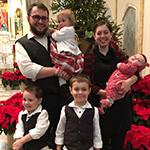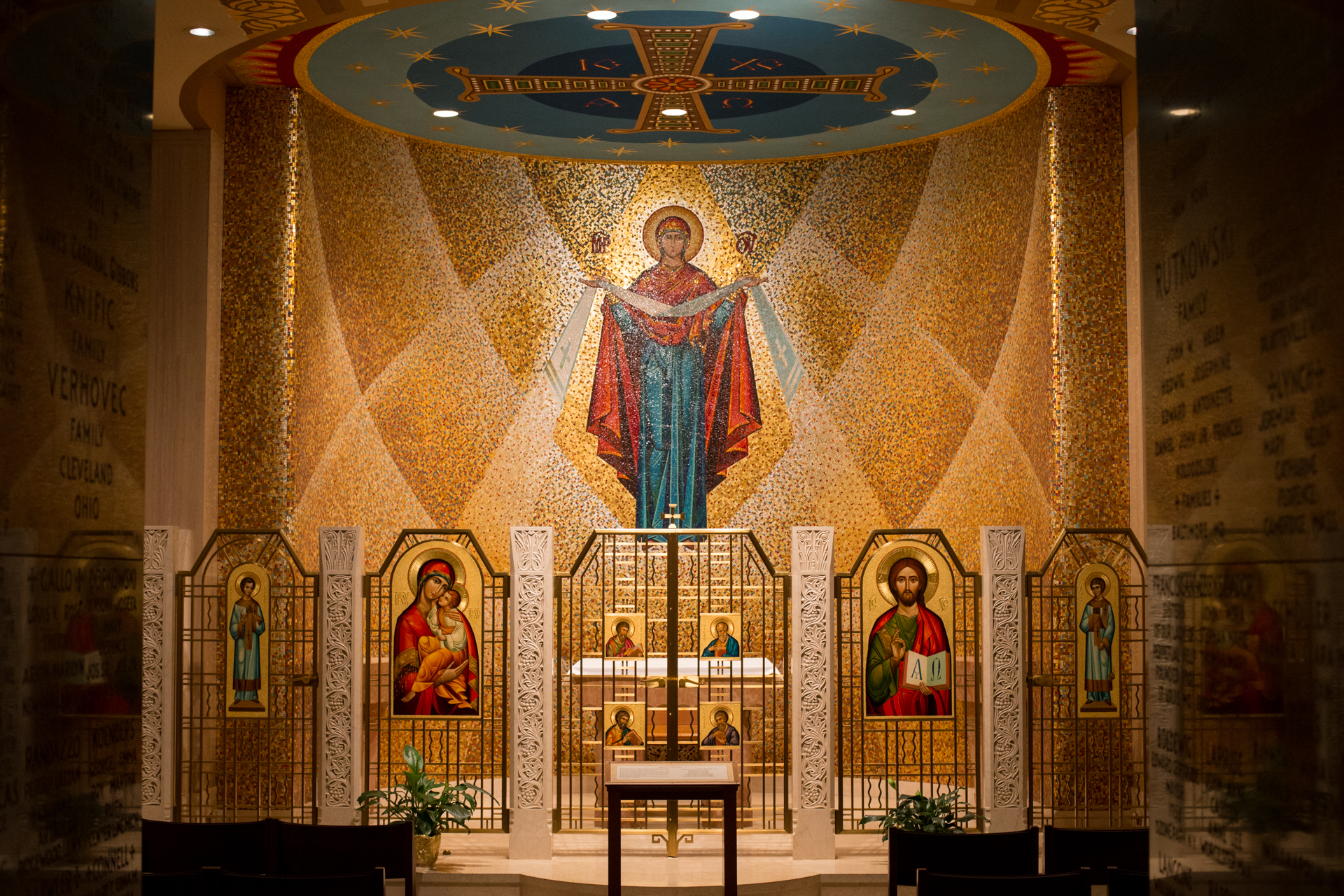In the first reading today, John describes the apocalyptic fall of the great city of Babylon. While there’s debate among Scripture scholars over whether John’s vision of Babylon represents Rome or Jerusalem, for my purposes here I want to focus on Babylon being identified as “the great harlot.” The harlot in Biblical imagery is the unfaithful one, the adulterer, the idolater. Harlotry, then, is the love of earthly goods to the detriment of love of God and neighbor.
In Revelation, the harlot is juxtaposed with the Bride of the Lamb. There at the end of this reading, when heaven is celebrating the destruction of Babylon, John says, “Then the angel said to me, ‘Write this: Blessed are those who have been called to the wedding feast of the Lamb.’” The Bride of the Lamb, the Bride of Christ, is the Church.
Next to Babylon’s unfaithfulness stands the Church’s faithfulness to Christ. “[The Church’s] structure is totally ordered to the holiness of Christ’s members. and holiness is measured according to the ‘great mystery’ in which the Bride responds with the gift of love to the gift of the Bridegroom” (Catechism 773). This is a reality worth pausing on. The Catechism says:
“The Church is the spotless bride of the spotless Lamb. ‘Christ loved the Church and gave himself up for her, that he might sanctify her.’ He has joined her with himself in an everlasting covenant and never stops caring for her as for his own body…’The two will become one flesh. This is a great mystery, and I am applying it to Christ and the Church.’ and the Lord himself says in the Gospel: ‘So they are no longer two, but one flesh.’ They are, in fact, two different persons, yet they are one in the conjugal union…(Catechism 796).
In other words, Christ and the Church are united with each other in the way that husband and wife are united. This mustn’t be trivialized. The Catechism says that married love “aims at a deeply personal unity, a unity that, beyond union in one flesh, leads to forming one heart and soul” (Catechism 1643). Thus if marriage brings together two persons and unites them so profoundly that they share one heart and soul, then the members of the Church, all who are baptized, are being united to Christ so profoundly that we share one heart and soul. This is what we call “theosis,” being transformed into the likeness of Christ, the process of becoming God (cf Catechism 460 and 2782).
However, in the situation the Church finds herself in today, it could be easy to mistake the Bride for a harlot. What could be more unfaithful to Christ than, as the Holy Father described it, “the suffering endured by many minors due to sexual abuse, the abuse of power and the abuse of conscience perpetrated by a significant number of clerics and consecrated persons”? The abusers choose power and objectification over love. The bishops who enabled the abuse chose earthly prestige over justice. What we are witnessing is the height of harlotry.
How do we, as the baptized members of the Church, find our true identity again? By turning to Mary. For “Mary goes before us all in the holiness that is the Church’s mystery as ‘the bride without spot or wrinkle.’ This is why the ‘Marian’ dimension of the Church precedes the ‘Petrine’” (Catechism 773). In other words, when the wounded and adulterous human institution falters we must turn to Mary for correction and reform. She is the “eschatological icon of the Church,” that is, “the image and beginning of the Church as it is to be perfected in the world to come” (Catechism 972). As Pope Francis says:
“‘If one member suffers, all suffer together with it’, said Saint Paul. By an attitude of prayer and penance, we will become attuned as individuals and as a community to this exhortation, so that we may grow in the gift of compassion, in justice, prevention and reparation. Mary chose to stand at the foot of her Son’s cross. She did so unhesitatingly, standing firmly by Jesus’ side. In this way, she reveals the way she lived her entire life. When we experience the desolation caused by these ecclesial wounds, we will do well, with Mary, ‘to insist more upon prayer’, seeking to grow all the more in love and fidelity to the Church. She, the first of the disciples, teaches all of us as disciples how we are to halt before the sufferings of the innocent, without excuses or cowardice. To look to Mary is to discover the model of a true follower of Christ.”
Let us pray to Mary, the spouse of the Holy Spirit, for a new outpouring of the Spirit to empower every member of the Church to act with courage and integrity in seeking justice for the perpetrators. Let us pray to Mary, the Mother of Christ, for each of us to be instruments of healing for the many wounded. Let us pray to Mary, the Handmaid of the Father, that leaders in the Church will have the humility to willingly give up their idolatry to earthly authority. Let us pray to Mary that the harlotry in the Church will be cast down so that we may all cry “Alleluia! Salvation, glory, and might belong to our God, for true and just are his judgments.”

Paul Fahey is a husband, father, and a parish director of religious education. He can be found at his website, Rejoice and be Glad: Catholicism in the Pope Francis Generation.

